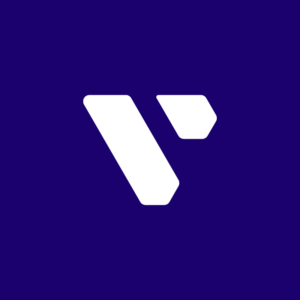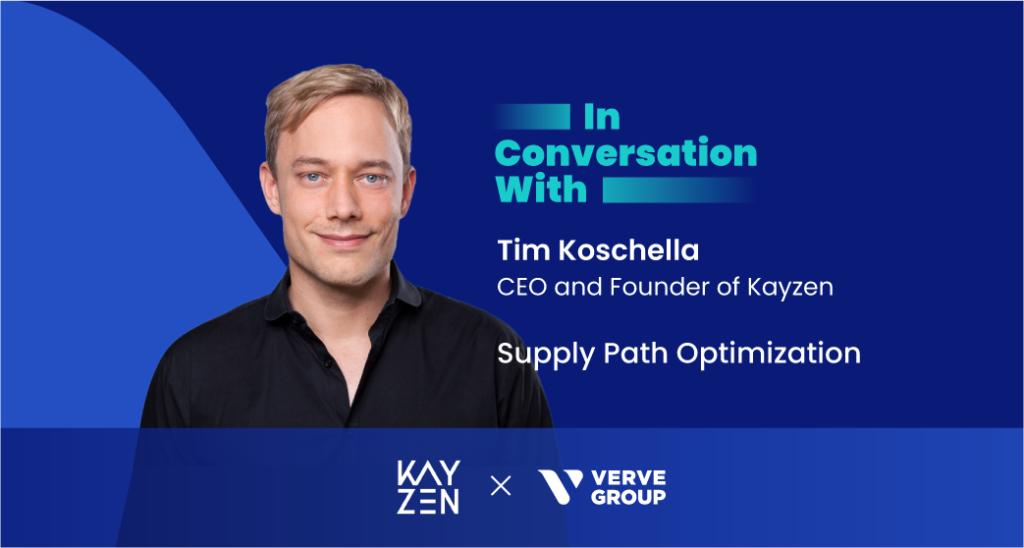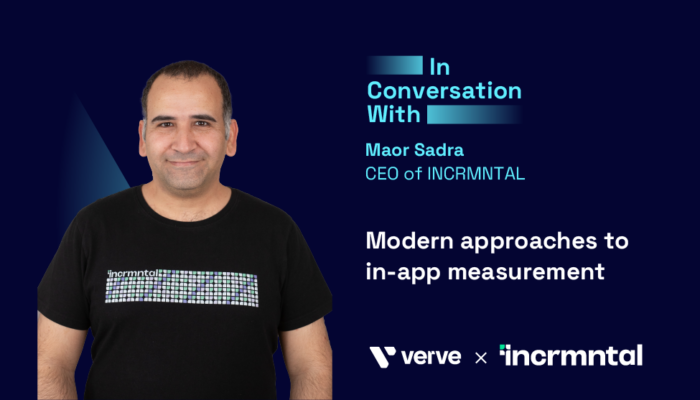We’re kicking off Verve’s first partner interview series with Kayzen’s Founder and CEO Tim Koschella, who’s here to give us an overview of supply path optimization. Each month we’ll be “In Conversation With” top industry leaders giving us their insights on key advertising topics. Let’s get started.
First things first: What is supply path optimization exactly?
Supply Path Optimization, also called SPO, is a concept that describes how an advertiser can optimize the path to the (ad) supply (i.e. the inventory) that they are buying.
Due to the nature of how the advertising ecosystem works, there are a number of middlemen an ad transaction typically goes through between the advertiser and the publisher. As a result, from each $1 of ad spend an advertiser pays, all too often only a fraction — not seldomly less than 50% — reaches the actual publisher. This is often also referred to as the “ad tech tax”.
While some of the middlemen may add enough value to justify the commission they charge for, others do not. Through SPO, advertisers get empowered to understand the value chain and the middlemen fees involved and decide which “path” to supply they want to use for their campaigns to maximize the percentage of ad budgets that goes into buying the inventory (“working media”) rather than paying middlemen fees.
How can media buyers implement an effective SPO strategy?
The starting point for a good SPO strategy is transparency about middlemen’s fees. Advertisers these days often have partial or full transparency into the sites, apps, and even specific site placements their media buys go to. But they often lack an understanding of the full supply chain and the various middlemen involved.
Understanding through how many “hands” your media buys go before they reach the publishers is essential for a good SPO strategy.
Secondly, buyers should understand the revenue models at play with each of the vendors/suppliers they work with, both direct and indirect. Ideally, this is laid out in full transparency, including the precise cut each middleman takes on each ad transaction. This is very hard to achieve though because middlemen do not like to reveal their take rates/margins. While it is sometimes straightforward to understand aggregated take rates (especially if the company you work with is listed), it may be hard to understand the take rates at play for your individual ad buys. Many vendors have dynamic yield optimization where the margins they cut depend on a variety of factors. Even if the vendor wanted to tell you they might not be able to do so because their margin is influenced by algorithmic decisioning rather than a value someone puts into the user interface of their system.
Thirdly, buyers should have a broad understanding of the technical setup of the ad supply chain and ways how to work around non-value-adding middlemen to maximize the amount of budget that goes to working media. The broad adoption of header bidding in programmatic ad transactions has led to a lot of pressure on middlemen and has enabled a lot more direct supply paths from buyers to sellers in recent times.
What are the benefits of SPO?
With good SPO, buyers can achieve two things: First, they can ensure that the supply they are buying originates from the source (publisher) that they intend to buy from and that they reach the audience they intended to reach. Second, they can save money on middlemen fees which they can either reinvest into buying more media — thereby effectively increasing the total value they get for their marketing budget — or they can keep the cost savings for themselves and hence reach the same results with less investment.
Publishers do also benefit from SPO since they can build more direct relationships with ad buyers and hence strengthen their market position and reduce their dependence on vendors. If buyers reinvest their savings into media, SPO can also drive up the (net) eCPMs publishers get for their inventory. Another benefit may be that by having direct relationships with ad buyers, publishers’ payment terms improve because the money doesn’t have to go through many hands before it ultimately lands in their bank account.
Finally, SPO can also lead to new revenue opportunities such as selling ad placements that can not be traded programmatically or other direct business with buyers.
How does in-app SPO compare to web SPO?
One could say that in-app SPO is not really happening yet. The in-app ad supply chain is much less transparent than browser-based inventory and there are a number of technical hurdles that stand in the way of achieving mass adoption of SPO. One such example is that many publishers still monetize with a waterfall setup in their ad server or at least a hybrid setup between in-app bidding and waterfall. This makes it hard(er) for buyers to understand through which supply paths they have access to the “full view” of publishers’ inventory. Furthermore, in order to render an ad in an app, the publisher needs to implement a vendors’ SDK into their app code.
Unlike putting an ad tag/JavaScript on your website, updating an SDK is a cumbersome process that takes time. More engineering work is involved and the app has to go through the App Store/Google Play Store review process before the updated code can be released. Even after the release, it may take months until a significant share of the user base of the respective app has updated the app on their phone or tablet. This way monetization vendors who have their SDK integrated with an app have strong leverage on the publisher and thus can command higher margins. On top of this, unlike desktop advertising, the majority of demand in mobile comes from performance app install ad buyers. The appetite for buyers to cut out middlemen can be low as long as the results they get are good enough to back out to their KPIs.
How does Kayzen help advertisers achieve the shortest path to supply?
Kayzen helps advertisers understand the supply chain, both from a technical perspective as well as from a commercial point of view. Equipped with that knowledge, advertisers can forge an SPO strategy. Kayzen then provides buyers with a low fee SaaS pricing and a set of tools to empower them to implement their SPO strategy and extract the most value from it, including forging direct connections to publishers with direct billing enabled between buyers and sellers.
Big thanks to Tim Koschella for diving into supply path optimization for our first partner interview series. Stay tuned for next month’s edition and get in touch if you’d like to get involved.





